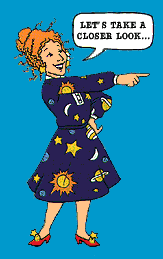Yikes! I promise that I am still here and have not gotten into any serious trouble. The last few months have been really busy...
In September I started a new job- yay! I'm officially a first grade English teacher. I also teach Science and Nature Studies/Geography, which is very fun. We get to make experiments and I like to pretend that I'm Miss Frizzle from The Magic Schoolbus (only with less awesome outfits, obviously).
The only problem about my job is that the school is really far away from where I live, so I travel for about an hour on two metro lines, a tram and a bus to get up to the mountain. The area is very beautiful, though, and right at the foot of Mt. Vitosha. This also makes it colder and snowier than the rest of the city. Oh, well.
For Halloween Kiril and I dressed up as a cowboy and 50s housewife, respectively, for a costume party here in Sofia. It was a lot of fun, and Kiril's homemade chocolate chip cookies were a big hit once again! People kept asking if I had made them, but alas I am not the baker of this relationship. I can whip up some great pancakes, though. ;)
Last week we spent Thanksgiving dinner with some friends here, mostly current Fulbrighters. I'm really happy that I get to meet the new researchers and English teachers every year, and that there are so many Americans who want to spend a year here in Bulgaria. A couple of prospective applicants have even emailed me through this blog, which is awesome! I guess that means I've done my job promoting how wonderful it is here.
In other news, I've been exercising more often and cooking a lot at home. It's getting colder now but we've had a relatively mild November compared with last year. October was downright hot. But winter has to arrive at some point... I've got my boots and heavy coats prepared anyway. Perhaps we'll be lucky and this won't be another record-breakingly cold winter.
Do skoro!
In September I started a new job- yay! I'm officially a first grade English teacher. I also teach Science and Nature Studies/Geography, which is very fun. We get to make experiments and I like to pretend that I'm Miss Frizzle from The Magic Schoolbus (only with less awesome outfits, obviously).
The only problem about my job is that the school is really far away from where I live, so I travel for about an hour on two metro lines, a tram and a bus to get up to the mountain. The area is very beautiful, though, and right at the foot of Mt. Vitosha. This also makes it colder and snowier than the rest of the city. Oh, well.
For Halloween Kiril and I dressed up as a cowboy and 50s housewife, respectively, for a costume party here in Sofia. It was a lot of fun, and Kiril's homemade chocolate chip cookies were a big hit once again! People kept asking if I had made them, but alas I am not the baker of this relationship. I can whip up some great pancakes, though. ;)
Last week we spent Thanksgiving dinner with some friends here, mostly current Fulbrighters. I'm really happy that I get to meet the new researchers and English teachers every year, and that there are so many Americans who want to spend a year here in Bulgaria. A couple of prospective applicants have even emailed me through this blog, which is awesome! I guess that means I've done my job promoting how wonderful it is here.
In other news, I've been exercising more often and cooking a lot at home. It's getting colder now but we've had a relatively mild November compared with last year. October was downright hot. But winter has to arrive at some point... I've got my boots and heavy coats prepared anyway. Perhaps we'll be lucky and this won't be another record-breakingly cold winter.
Do skoro!













